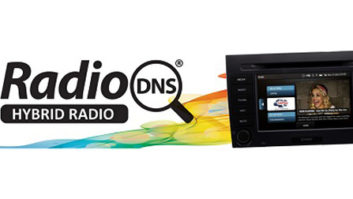New radio market definitions tested
Jul 1, 2005 12:00 PM, By Harry Martin
No big surprise: the FCC finally gets a new local market definition rule in place and in roll petitions seeking to test the �bright lines� established by the new rule. For the moment, however, the new rule’s bright lines remain clear, for the FCC has recently rejected requests to use alternative market definitions in making station counts under the radio multiple ownership rule.
One case involved stations in Ithaca, NY, an Arbitron-rated market where BIA reported nine radio stations �home� to the market. A four-station group was proposed to be sold intact. Under the FCC’s local radio multiple ownership rule, in a market with 14 or fewer stations, an entity may not own more than half the stations. Thus, if there were nine stations in the market, the proposed sale would have been permitted. Petitioners opposing the application argued that, because of terrain obstructions that allegedly prevented reception of two of the nine in-market stations listed by BIA, the market should be deemed to consist of only seven stations, which would have precluded the proposed sale. The FCC rejected these technically based arguments.
The Commission said the Arbitron-based market definition is presumptively to be used, and there is a heavy burden on a petitioner to show that an alternative definition is appropriate. The FCC’s staff reviewed the market in question and concluded that seven stations provide city-grade or better coverage and two other stations provide city-grade coverage to most of the market. As a result, the FCC found that the petitioner’s argument regarding terrain obstructions failed to show that reliance on the Arbitron market definition was inappropriate. Thus, the FCC found that acquisition of a four-station group complied with the multiple ownership rules.
Another attempt
In a second recent case, the complaining petitioner tried a different tack. The four stations proposed to be sold were located in Pullman, WA, and Colfax, WA, neither of which is in an Arbitron-defined market. That didn’t bother the petitioner, who argued that the Commission should define a new �Moscow [Idaho]-Pullman-Colfax� market to consist of stations licensed only to those three communities. Because there were only nine stations that would be considered local under this formulation, and because the proposed buyer already owned two of them, the proposed assignment would have left six of those nine stations under common control.
The Commission rejected this approach, observing that in unrated markets it has adopted an interim market-definition method using a contour overlap standard similarly modeled after the old rule. The proposed assignments easily conformed with those rules and were granted.
We can expect to see more new and novel challenges to the radio market definitions. Nevertheless, the Commission is reluctant to go beyond the confines of any new rule, especially one like the radio market definition, which was adopted only after years of debate and court challenges.
Previously, the FCC’s guidelines used in reviewing merger cases were murky. The agency flagged cases where informal market concentration benchmarks were exceeded, but ended up granting most of these. The new rule, by making the market definition tighter and more rational, swept away the flagging procedure and otherwise short-circuited FCC consideration of competition issues. This does not mean, however, that the FCC won’t be persuaded in rare cases that the new market definitions shouldn’t apply, and the door certainly remains open to such challenges. But, the burden of convincing the Commission to look beyond the new market definition will be high given the new rule’s history and agency’s lack of a jurisdictional basis to deal with competition issues case-by-case.
Dateline:
On Aug. 1 radio stations and FM translator stations in California must file their 2005 renewal applications. Radio stations also must file biennial ownership reports and EEO program reports by Aug. 1. California radio stations must broadcast their renewal post-filing announcements on Aug. 1 and 16, Sept. 1 and 16 and Oct. 1 and 16.
Aug. 1 also is the deadline for radio stations in Alaska, Hawaii, Oregon, Washington and the Pacific Islands to begin their renewal pre-filing announcements in anticipation of filing their renewal applications on or before Oct. 1.
Martin is a past president of the Federal Communications Bar Association and a member of Fletcher, Heald and Hildreth, Arlington, VA. E-mail[email protected].











